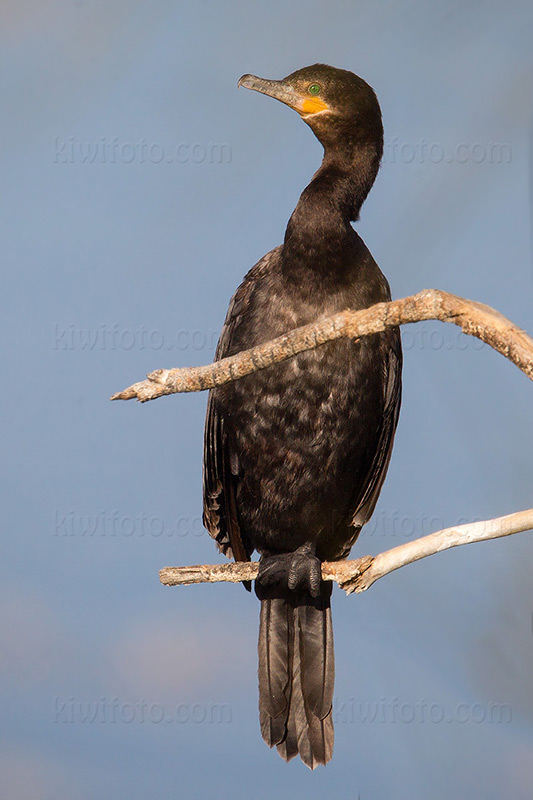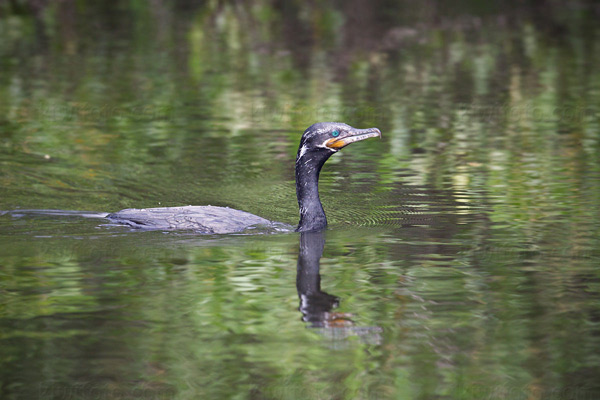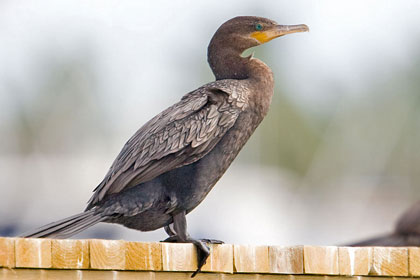The Neotropic Cormorant, Phalacrocorax brasilianus, is a cormorant found throughout the American tropics and subtropics, from the middle Rio Grande and the Gulf and Californian coasts of the USA south through Mexico and Central America to southern South America. It also breeds on the Bahamas, Cuba and Trinidad. The northern populations, from Nicaragua northwards, are often called Mexican or Olivaceous Cormorants, and many authors treat these as a separate species P. olivaceus. Those who maintain that the entire population constitutes a single species treat the northern birds as a subspecies Phalacrocorax brasilianus mexicanus and the southern birds as subspecies P. b. brasilianus.
This bird is 64 cm long with a 100 cm wingspan, and weighs from 1 to 1.5 kg; birds of the southern populations tend to be bigger than the more northerly birds. It is small and slender, especially compared to the larger, heavier-looking Double-crested Cormorant. It has a long tail and frequently holds its neck in an S-shape. Adult plumage is mainly black, with a yellow-brown throat patch. During breeding, white tufts appear on the sides of the head, and the throat patch develops a white edge. Juveniles are brownish in color.
Its diet consists mainly of small fish, but will also eat tadpoles, frogs, and aquatic insects. This cormorant forages for food by diving underwater, propelling itself by its feet. It is also known to forage in groups, with several birds beating the water with their wings to drive fish forward into shallows.
Neotropic Cormorants are monogamous and breed in colonies. The nest is a platform of sticks with a depression in the center circled with twigs and grass. Up to five chalky, bluish-white eggs are laid. The eggs soon become nest-stained. Both sexes incubate for about 25"?30 days, and both parents feed the young until around the 11th week. By week 12, they are independent. One brood is raised per year.
Unlike other cormorants, this bird can often be seen perching on wires.
This bird is largely a permanent resident, with some birds occasionally wandering north in the warmer months.



